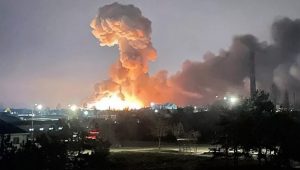 By Vivek Pattanayak in Bhubaneswar, October 20, 2022: When Deng and Rajiv Gandhi met in 1989 to bring détente between two great Asian civilizations after the Sino-Indian war of 1962, he told Rajiv Gandhi, “My young friend forget the past and think of the future. Next century will be the Asian century. Both China and India will be dominant players.”
By Vivek Pattanayak in Bhubaneswar, October 20, 2022: When Deng and Rajiv Gandhi met in 1989 to bring détente between two great Asian civilizations after the Sino-Indian war of 1962, he told Rajiv Gandhi, “My young friend forget the past and think of the future. Next century will be the Asian century. Both China and India will be dominant players.”
Thirty-three years have elapsed since then. We are in the third decade of the 21st century. Undoubtedly China is the largest economy of the world by purchasing power parity (PPP) and India is the third largest economy by the same standard of purchasing power parity (PPP) since March 2014. China’s rise since then has been not only phenomenal also meteoric. Its economic prowess has global reach.
It has sent space crafts to moon and Mars and astronauts to space. India since then has made global presence. Its progress in space and rocket technology has been impressive. Its growth has been spectacular. Even GDP rose in near double-digit terms at one stage.
Japan continues to be one the largest economies of the world with high degree of technological excellence including in robotics and making very impressive forays in the space adventure. Indonesia, Philippines, and South Korea have drawn the attention of the world for their economic progress.
Needless to mention that Vietnam is attracting large investment including those migrating from China. Taiwan is the vibrating economy for its electronic industry. It is also having flourishing business with China and USA, although both are at logger heads. Foxconn of Taiwan is hotly sought-after company. Vedanta’s Anil Aggarwal is collaborating with it for large-scale investment in Gujarat in India.
A city-State of Singapore has shown its trade and business muscle having access to Europe and North America. Even Malaysia is having a vibrating economy. Needless to mention about the prowess of Hongkong in spite of China’s increasing political hold not withstanding the doctrine of “one nation and two systems.”
The ASEAN economy is experiencing such a pulsating growth that its emergence, even Europe and US cannot ignore .  Asia, as a geographic continent, starts from the West Asia to the East Asia, South Asia to Southeast Asia. One must include Iran and the Middle East. Saudi Arabia, UAE and now Qatar have been the hub of enormous economic activities. Oil and gas being the driving force of the global economy the Middle East influences the world trade, commerce, and business. Air carriers of these countries have outclassed their American counterparts .
Asia, as a geographic continent, starts from the West Asia to the East Asia, South Asia to Southeast Asia. One must include Iran and the Middle East. Saudi Arabia, UAE and now Qatar have been the hub of enormous economic activities. Oil and gas being the driving force of the global economy the Middle East influences the world trade, commerce, and business. Air carriers of these countries have outclassed their American counterparts .
In spite of US sanction Iran’s oil reserves have to be reckoned with for the present and future growth of global economy.
However, political tension exists between the two Asian giants, namely India and China with the Chinese and Indian military are on a confrontational path.
On political side relationship between Japan and China is tense first due to controversy over Senkaku islands (what China calls Diaoyu Island) and second due to its political and strategic proximity towards US. As regards South Korea, as long as North Korea’s hostile posture towards South exists and continues political relationship between China and South Korea will continue. China’s claim over South China Sea over nine-dash lines has contributed towards political uneasiness in the region.
It is interesting to observe that the trade and commerce between Japan and China is humongous, so is the trade and tourism between China and South Korea.
Potentialities of South Asia are immense with trained work force industrial infrastructure and robust institutions like banks, insurance companies and stock market. Misfortune of history bequeathed to its people has not helped South Asia in spite of SAARC to create an association like ASEAN.
In the Middle East in spite of the Arab League and religious bond there is no unity of purpose in bringing stability and prosperity among the people.
From the above narration it is clear, however much in the past some might have thought that this century would belong to Asia notwithstanding last two decades of economic progress it has not created an atmosphere for the Asian solidarity.
After World War II, Europe demonstrated how both political and economic solidarity can be achieved. In association of Europe US could claim that the most of sixty years the age belonged to West including Canada, Australia and New Zealand. With Brexit and rise of fractious politics the continent’s solidarity is being eroded. With Trump’s policy US also got detached from Europe.

Situation is, however, extremely volatile, and unpredictable with war in Ukraine. Added to that has been the disastrous financial situation of UK and rise of rightist forces in Italy, Hungary, Poland, and now Sweden. Scotland is threatening to secede. Catalonia has already demonstrated its separatism. Now the dominance of the West in global scenario is questionable for now, and uncertain for future.
Since demise of Deng and with ascendancy of Xi, China’s attitude has changed. While policy of Deng was “hide your strength and bide your time,” the present leadership of Xi has more of demonstration of strength.
Irritants to the Chinese leadership are QUAD and AUKUS.US led west would not like to relax its hold over the Asian continent for variety of reasons. Its military presence in Japan and South Korea would not budge any time in the near future.
In spite of this, SCO and BRICS reflect coming together of the countries of the South although Brazil and South Africa in BRICS are not Asian power.
From the above, one wonders whether it can be considered as the Asian century. By 2047 even if India becomes a thirty trillion-dollar economy as the prediction has been made by Asia’s richest man and by 2049 China becomes a developed country as Xi aims at, with unresolved disputes among the leading powers in Asia the uneasy political situation in the continent would make the region unstable with nibbling of “five eyes”, US, Australia, New Zealand UK, and Canada. Blood is thicker than water.
Have the West reconciled to the loss of colonies, rise of China and spectacular progress made by Japan after the ending of World War II with devastation of Hiroshima and Nagasaki.
Can the psychosis of the hierarchical world order disappear?



Leave a Reply
1 Comment on "WILL IT BE THE ASIAN CENTURY?"
Political stability, with a vision of 100 years at the Leadership level, is what I project, can move India ahead, economically; making drastic reforms in Elections, economics.